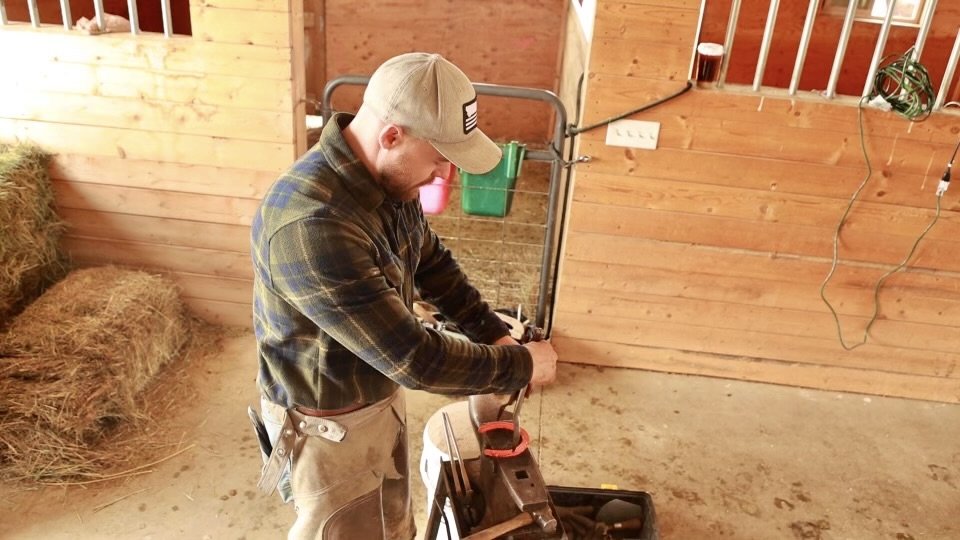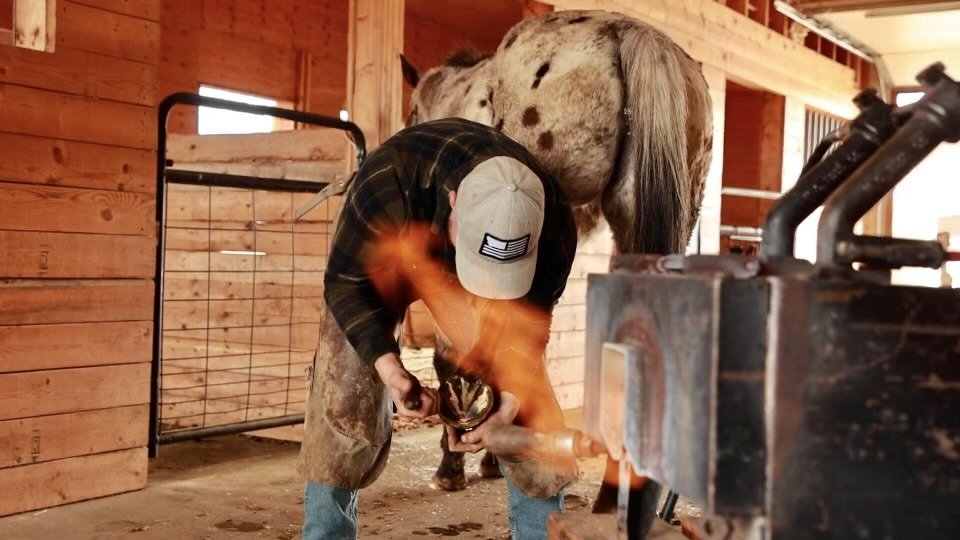A Day in the Life of a Farrier
White Sulphur Springs, MT
Written by Randyn Gregg
Photography contributed
Farrier. No, not fairy, not furrier, and no, not ferrying boats across a river.
Believe it or not, these have each been mistaken when I describe, in my humble opinion, one of the best jobs on the planet.
So, what exactly is a farrier? According to the Oxford Dictionary, a farrier is "a craftsman who trims and shoes horses' hooves." Out here in the rural Rocky Mountain West, a farrier is much more than just a person working on a horse.
Farriery is both an art and a science, and a constant balancing act between the two. The trade is now taught at reputable universities and schools across the country including Montana State University Farrier School, Bozeman, where the key focus is the fundamentals of blacksmithing and equine anatomy.
The practice of farriery and blacksmithing is one of the oldest professions known to mankind. Despite far earlier origins, the art of farriery is often attributed to the Romans who scaled up the profession. It was the Romans who utilized farriers to create a horseshoe called the “hipposandal” to shoe up to 5,000 horses at a time including all from Calvary to pack animals during their conquests of Europe. While farriery was practiced even prior, there’s certain evidence in 1000 A.D. that shoes were tacked to horse’s hooves.
And while the past hundred years have brought much change, much has remained the same in the life of a rural Montana farrier.
A few centuries ago, life in the American West was riddled with adventure, opportunity and danger as the nation’s vast open and rugged swathes were settled. Blacksmiths and farriers were integral components of the movement West, being called upon to build everything from nails to wagon wheels and shoeing all types of horses in between. In fact, a novel by Western author Louis L’Amour, “Iron Marshal,” describes life in a small frontier town blacksmith shop.
Farriers and blacksmiths served the U.S. Military working in each Army fort and barrack across the country as well. And, to a lesser extent, farriers and blacksmiths still serve in this capacity today, with the First Cavalry Division Horse Cavalry Detachment based in Fort Hood, near Austin, Texas and the Third U.S. Infantry Regiment, also known as the “Old Guard,” charged with carrying fallen military members to their final resting place at Arlington National Cemetery.
However, blacksmith shops with pinging hammers and black smoke rolling from a large coke forge are a sight of the past. Modern farriers have traded the town shop for a pickup and trailer equipped with the tools of the trade.
Those fundamental tools, though, have largely stayed the same and include an anvil, typically between 70-100 pounds, and a propane forge to heat steel or out-of-the-box horseshoes in a matter of minutes. A variety of hammers, including a solid forging hammer weighing between 2-3 pounds is utilized to shape the shoe to the needs and requirements of each horse. Also included is an assortment of tongs to grasp the steel and horseshoes and, when the time comes, to burn the shoe into the hoof. This process doesn’t hurt the horse and after a quick burn on the horse's hoof, the farrier quenches the shoe in a bucket of water.
In many cases, the farrier must grind or rasp the shoe to perfect the fit to the horse. Once properly shaped and sized, it is time to nail up the shoe. Specific horseshoe nails, typically made of steel but increasingly made with a copper finish, have been developed to help in the prevention of crippling the horse either by accident or incompetence. After completing the nailing, the farrier clips or pulls off the tips of the nail, now protruding through the hoof, then block and clinch the nail, bringing the horseshoe nail flush with the horse’s hoof. Shoes should be reset between four to eight weeks to prevent overgrowth and pinching of heels.
Furthering the rewarding work as a farrier in rural Montana are the collection of stories, from hilarious and heartwarming to tragic and tear-jerking. A favorite is that of a goliath of a man, a rancher who went by the nickname Tit – I never wanted to inquire further about the reason for this nickname. Tit called me to shoe his work-in-progress ranch horse gelding, a sweet little four-year-old named Max in preparation for moving cows to summer pasture. That early summer day was a scorcher, close to 100 degrees, and even before I began working on the horse, I was covered in sweat.
As I bent down to work on his hooves, Max continually nudged me, attempting to yank off my shirt and in a gentle yetfirm manner, I gave Max the elbow. Max got the message, but as I brought one of his front feet onto my shoeing stand to clinch and finish the foot, Max struck with a vengeance, ripping the ballcap from my head in a gentle, yet rigorous manner. Max proceeded to suck on my sweaty ball cap in a way reminiscent of a baby with a pacifier, complete with loud, smacking and sucking sound effects. The more I tried to get my ball cap back, the less Max wanted to return it. Eventually, Max dropped my hat, but not until it was wrung out of sweat and covered in green horse drool. The moral of the story was to ensure horses have ready access to tolt and trace minerals otherwise, the farrier's ball cap may become a casualty.
Farriery is much more than a trade, especially in the Northern Rockies and Plains – it’s a livelihood, something that, in a small way, allows those in the business to be woven into the fabric which makes up Montana and the American West.Farriery is something shared with farming and ranching families, and others completing the beautiful patchwork of communities comprising rural Montana. From shoeing a little girl's first 4-H horse to preparing a big ranch for spring branding, farriery is a lifestyle I wouldn't trade for the world.




